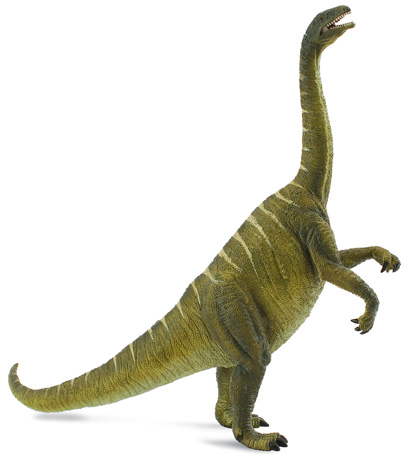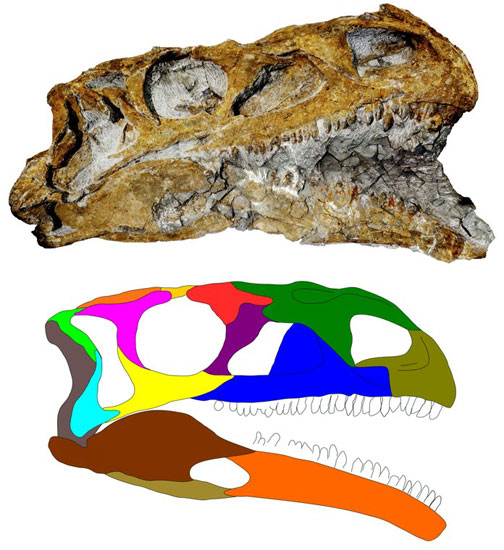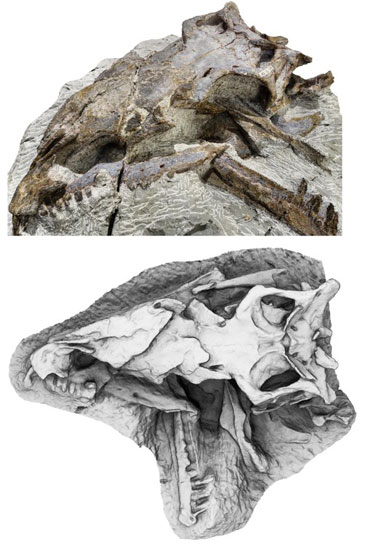Researchers from the University of Bonn (Germany), in collaboration with colleagues from Liverpool John Moores University examined cranial material of the Plateosaurus species – P. trossingensis and discovered that the skulls of these dinosaurs demonstrated a high degree of variation. Just like people, this Plateosaurus species demonstrates a high degree of individual variation within a species.

Not All Dinosaurs of the Same Species Looked Alike
Plateosaurus from the Late Triassic of Europe is one of the most extensively studied of all the dinosaurs, thanks mainly to the huge bonebeds containing thousands of fossilised bones that have been found. It is by studying the fossilised remains that palaeontologists can put forward evidence to suggest the erection of a new species. However, this new study published in Acta Palaeontologica Polonica, suggests that the anatomy of Plateosaurus was significantly more variable than previously thought.

The picture (above) shows a CollectA Plateosaurus figure.
To view this range: CollectA Age of Dinosaurs Models and Figures.
Natural Variation
The researchers examined the complete skulls of fourteen individual Plateosaurus trossingensis specimens, eight of which had not been studied before, along with numerous other skull bones and discovered that there was considerable variation in the skulls. Such variation had been noted before and it had been suggested that the extensive bonebeds at Frick (northern Switzerland), Trossingen (south-western Germany) and Halberstadt (central Germany) might contain the fossilised remains of more than one species.
However, the researchers which included PhD student Jens Lallensack (University of Bonn), could not group these variations according to specific anatomical traits, locality or their stratigraphy. The team concluded that there was no evidence to indicate the presence of more than one species, but these types of dinosaurs showed considerable variation within their species (intraspecific variability).

Taking into Account Bone Deformation
The careful documentation of the skull variation will assist other palaeontologists when it comes to understanding the distinct individuality of dinosaurs within a given population. The team were able to distinguish these differences from those characteristics of the bones that are deformed and altered as a result of their fossilisation. Being able to attribute bone deformation due to taphonomy (the fossilisation process), is extremely useful in helping to determine unique anatomical traits that could lead to the identification of a new species.

The scientific paper: “New skulls of the basal sauropodomorph Plateosaurus trossingensis from Frick, Switzerland: Is there more than one species?” by Jens N. Lallensack, Elżbieta M. Teschner, Ben Pabst and P. Martin Sander published in Acta Palaeontologica Polonica.
Visit the Everything Dinosaur website: Everything Dinosaur.






Leave A Comment